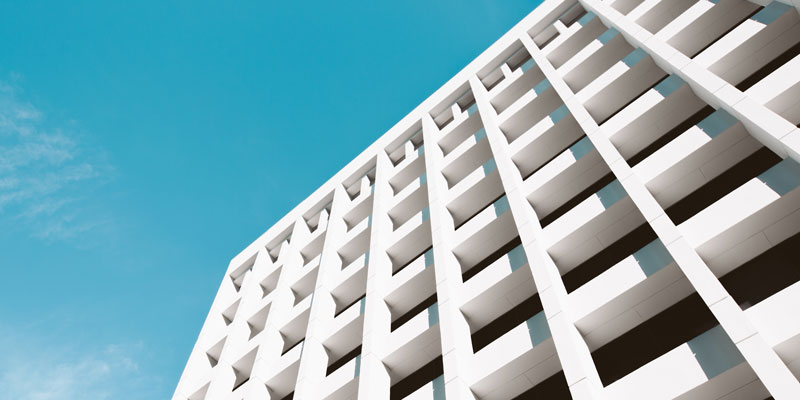Differing Preparation Procedures for Different Substrate Materials
There are many variables to consider when thinking about painting a commercial building. Preparation of the space is by far the most important aspect. How the area is prepared will determine the success and, ultimately, the life of the paint job. However, not all surfaces can be prepared using the same technique, as one preparation for one type of surface could actually cause damage to another. For example, metal and wood require completely different methods. Be sure to know how to properly prepare the surfaces before starting your project.

Preparing Wooden Areas
One of the first things a professional painter does is perform a test in an inconspicuous area, where the paint is worn. They clean the surface with soap and water, and then rinse the area well. They allow plenty of time for the area to dry thoroughly. They then press a piece of tape on the cleaned area, and pull it off quickly. If they find no paint was peeled off along with the tape, further preparations can continue on the rest of the structure for painting.
Projects begin with taping fixtures and trims to protect them from the paint. If the paint peels off on the tape and the bare wood is exposed, the painter may need to strip the building before painting. If your building was painted using oil paint, it may be necessary to touch-up the existing paint job or strip the building's exterior paint to re-apply oil paint or cover it with latex paint.
Preparing Metal Surfaces
Preparing metal for painting on a home or commercial building requires time, patience, and experience. The process is labor intensive and needs to be tackled by professionals who have the knowledge, equipment, and skills to master the job, but also protect your building in the process. Expect to see these steps before painting the metal on your structure.
Thorough Cleaning and Removal of Peeling, Loose Paint
For newly installed metal, mineral spirits would be used to eliminate any greasy areas on the metal's surface. The contractor would then apply a primer to prevent the formation of rust before painting. If painting over metal surfaces that have been painted previously, dust and soiled areas are cleaned, and the metal is lightly sanded to de-gloss it. Mineral spirits would then be applied to ensure a good adhesive bond. If there are any areas on the metal that are heavily soiled, a commercial product or solution made from a mild detergent may be needed to cleanse those areas.
Paint in poor condition must be removed. This can be done by brushing the paint away with a wire hand brush, or by sanding or scraping. These methods of old paint removal can be labor intensive, so power tools are sometimes required. This can be somewhat tricky, as this could result in a polished surface, which could make it difficult for the paint to adhere to the surface.
Rust Elimination
Rusted surfaces are inconducive to painting, but it can usually be taken care of easily. Contractors either sand or use a wire brush to restore metal to its original form. After that process is complete, a rust-inhibitive is used to cover the surface. Rust converters or rust-inhibitive primers can be added to cover rusted areas, so the paint will adhere to the surface.
Resolving Dents and Holes
Dents and holes are prepared by sanding rough areas down to the bare metal. Mineral spirits mixed with a degreaser are then used to wipe down the treated areas. Epoxy can be injected into smaller dents and holes to fill them in. Larger holes are filled by using epoxy filler around the edges, and then cutting fiberglass larger than the hole; the fiberglass is then pressed into the filler. The mesh is then covered with epoxy. It is important to resolve these now, for it can cause imperfect painting and deteriorate faster with more time.
Priming
Priming is an important step that protects the metal surface from moisture. There are many considerations when selecting a primer, like the area’s weather patterns and the desired product appearance. Latex primers should never be used on metal surfaces. Professional painters use galvanized metal primers and rust converters. Surfaces are also primed immediately after cleaning to prevent dirt, dust, and the formation of flash rust.
Taking on a painting project can be a tall task, with all its variables and necessary time investment in preparation and implementation. We are equipped, specialized, and always happy to help any home or commercial building with their painting needs. For more information on painting preparations or if you are finding your next painting project to be quite the endeavor, contact us today!
About the author
Chase DeRousse is the Vice President of Painting at Major Painting and strives to deliver quality craftsmanship coupled with superior customer service, creating a unique and pleasant experience for all Major Painting customers, no matter the size of the project. Chase also holds an active Class A General Contracting License.
Chase has won multiple accolades recognizing his leadership and excellence in the painting industry including awards from the Painting Contractor Association (PCA), Business Owners and Managers Association (BOMA), and Institute of Real Estate Management (IREM).